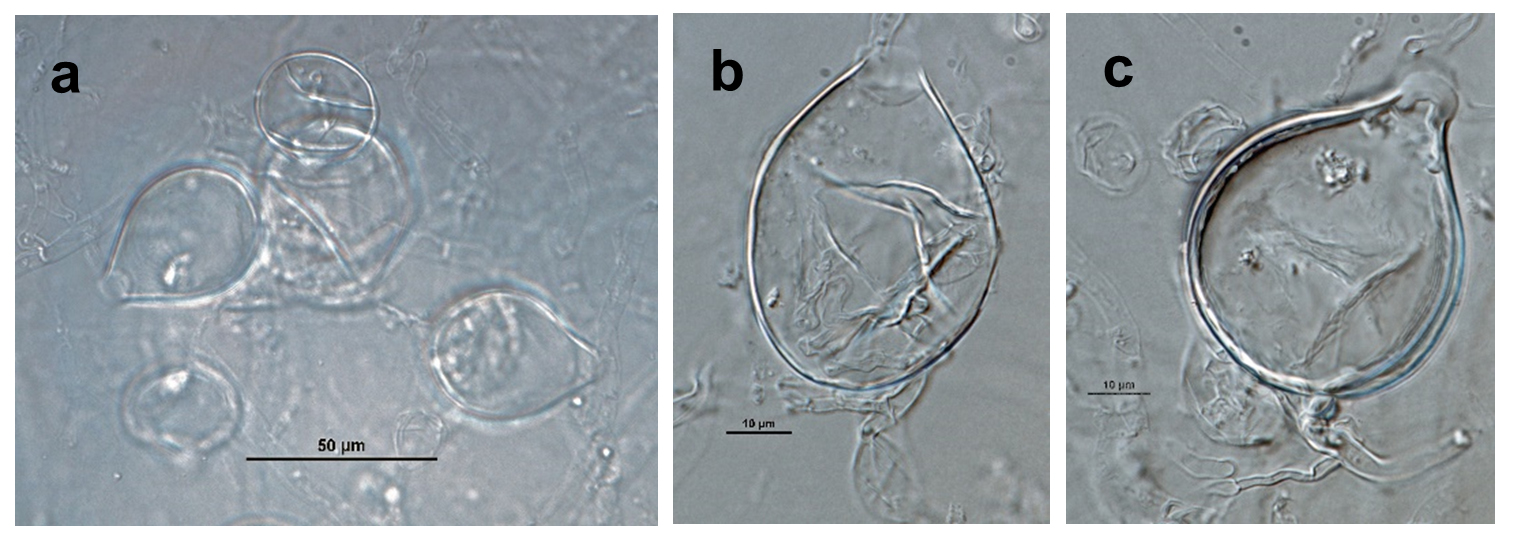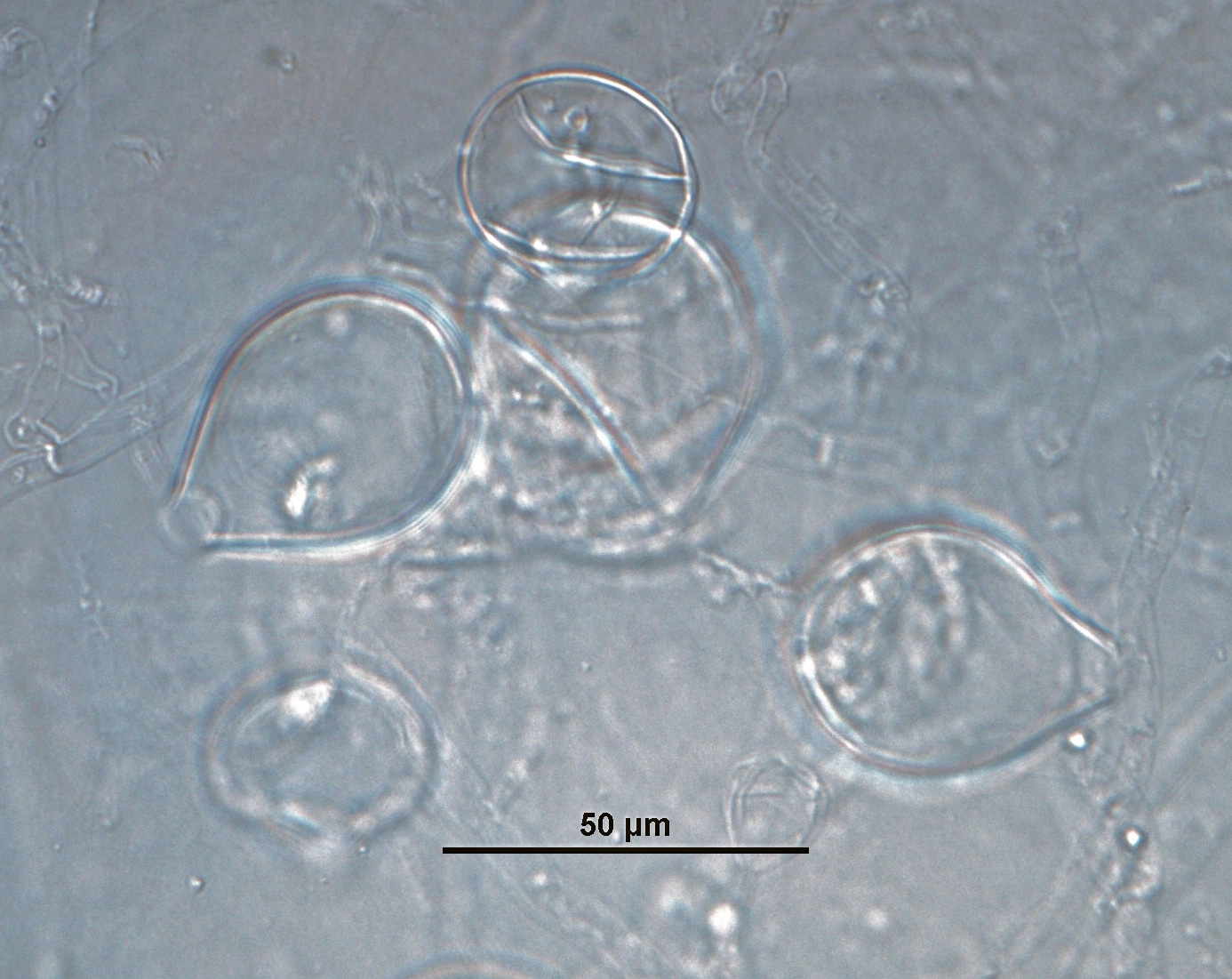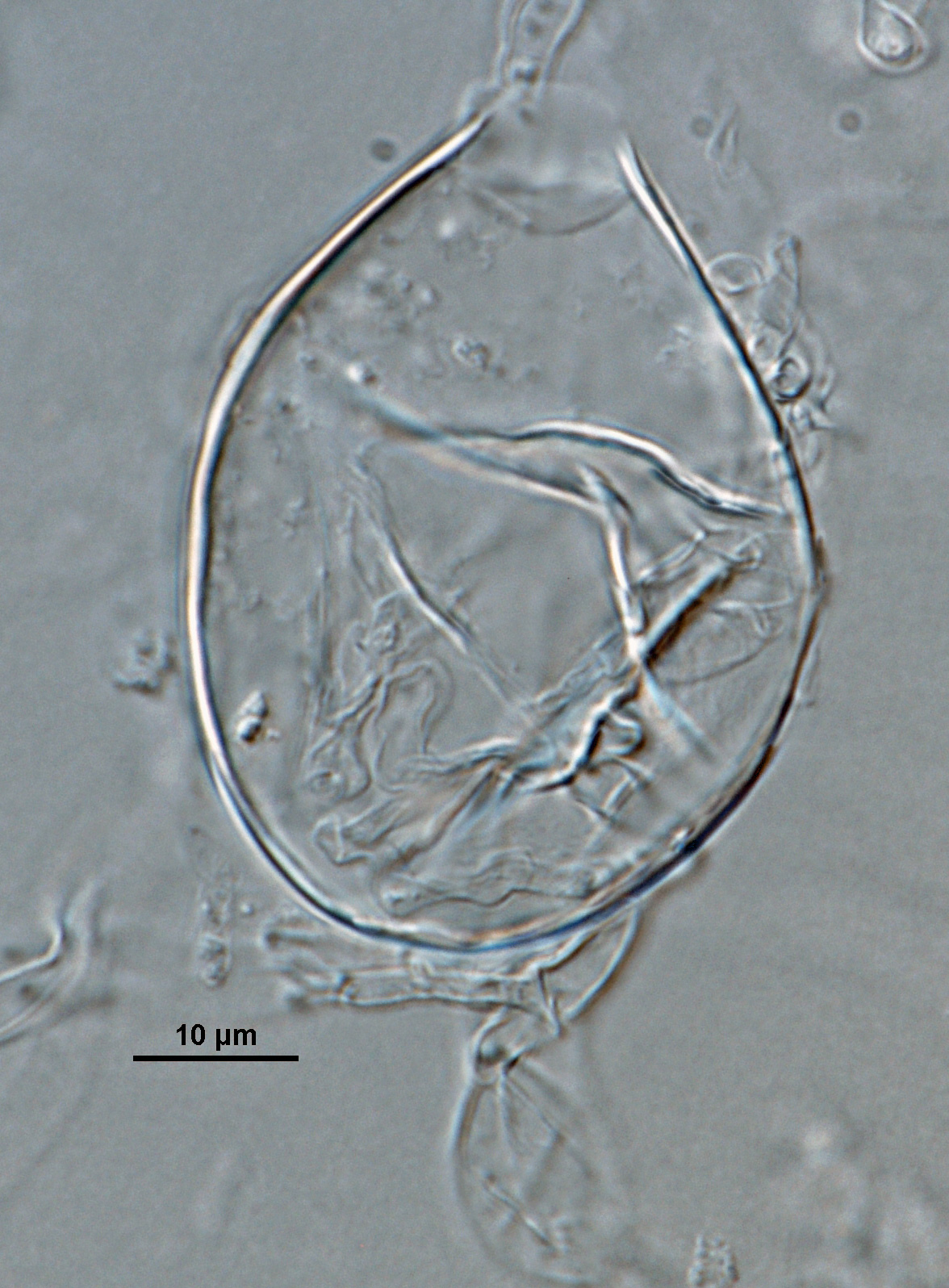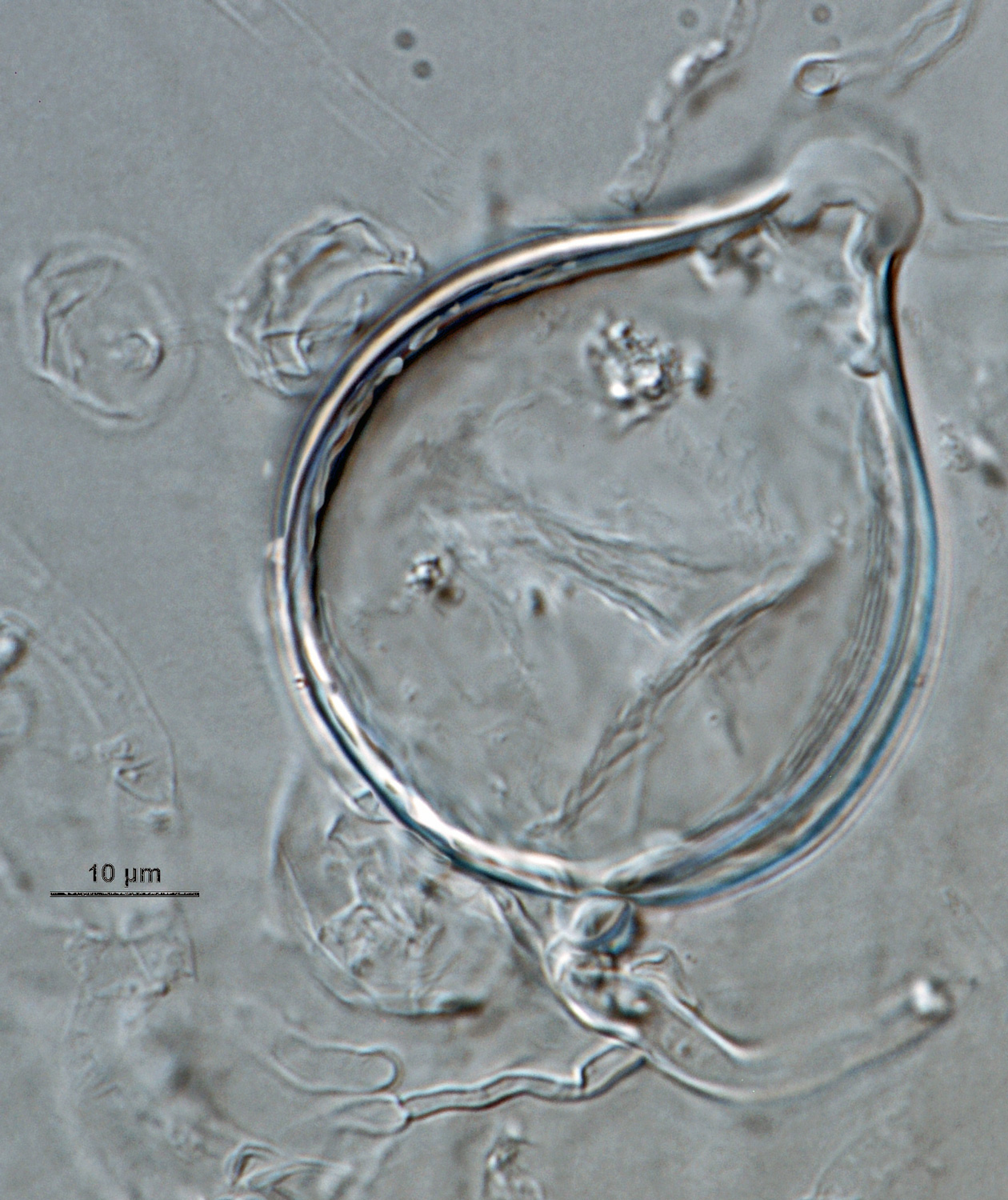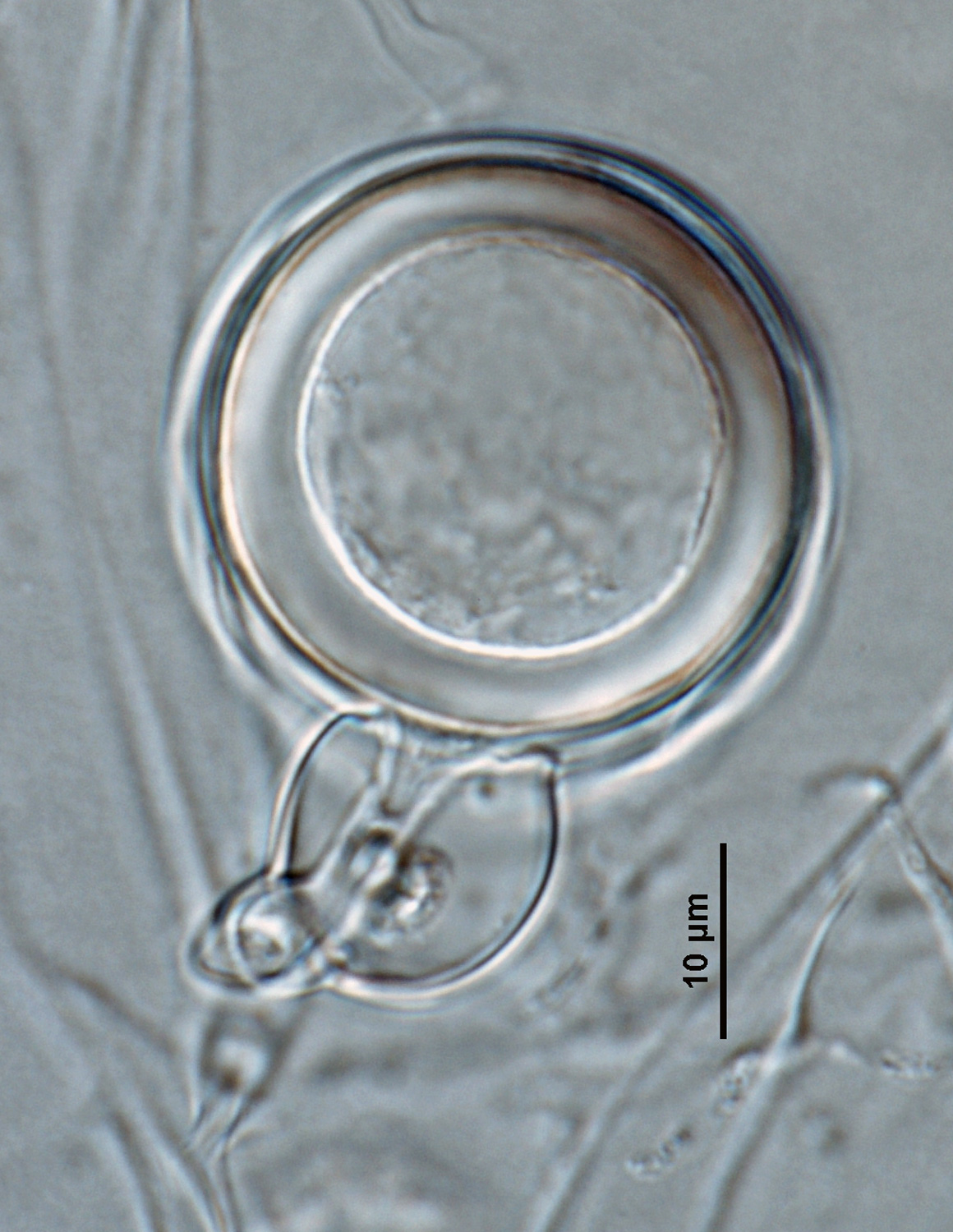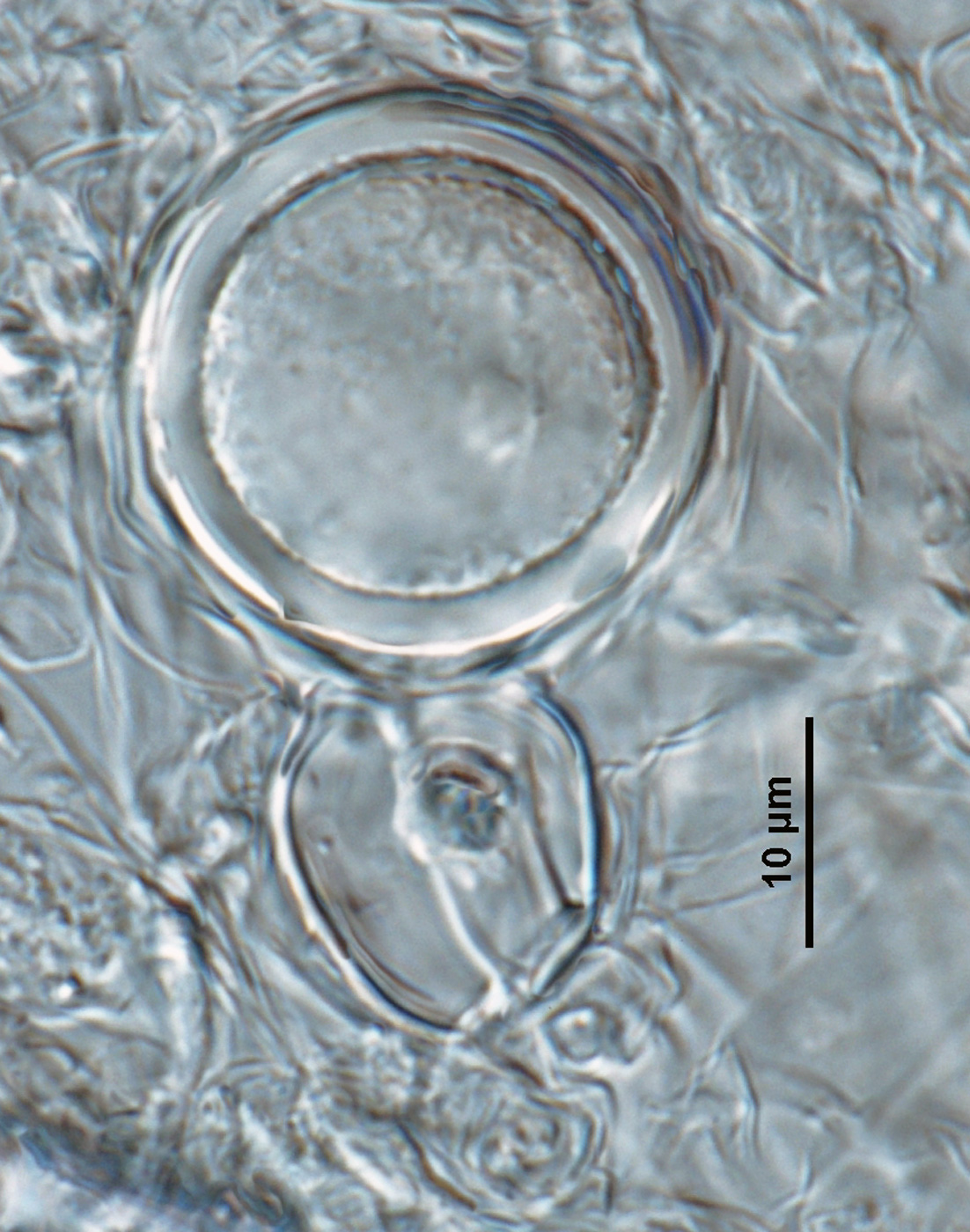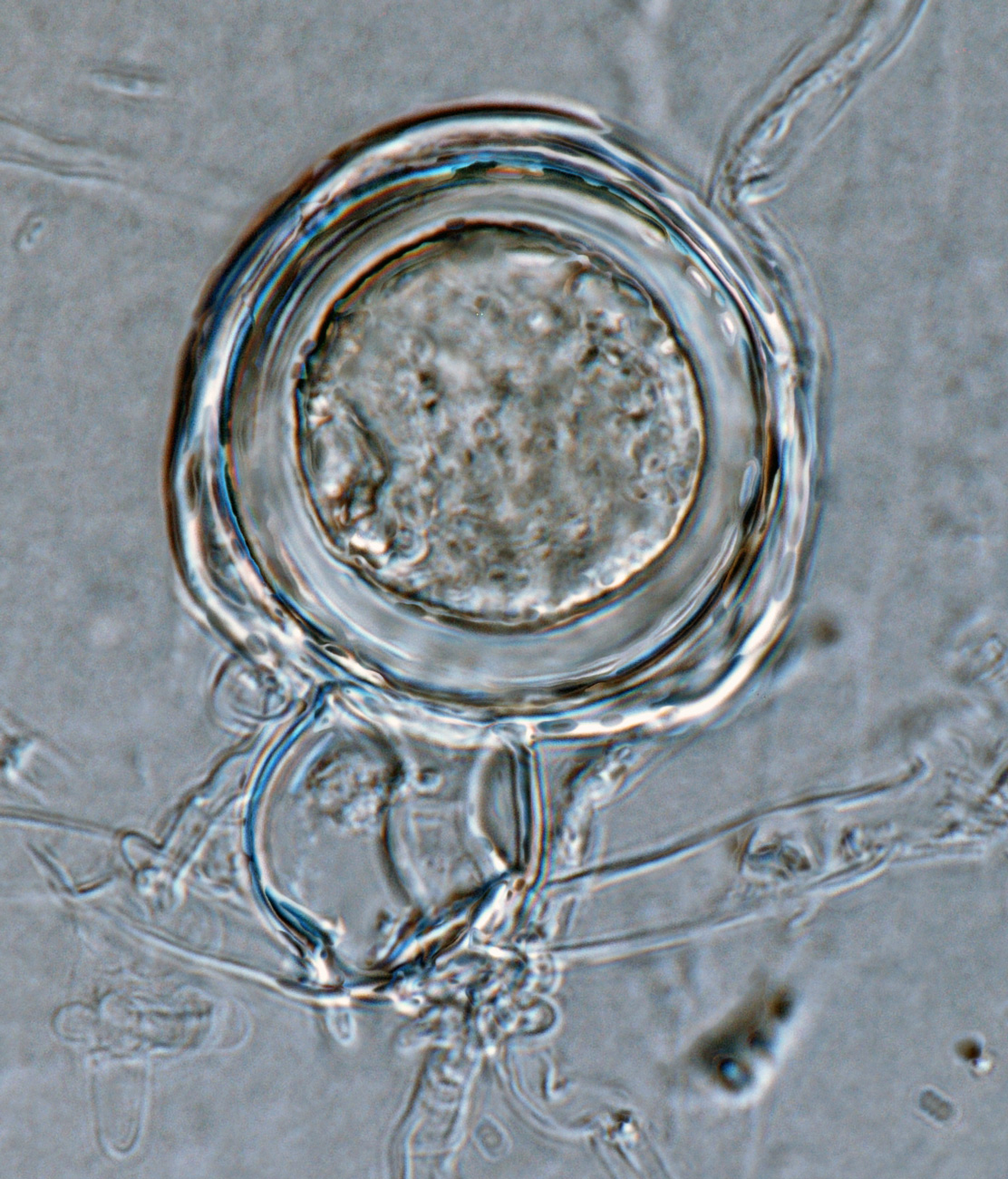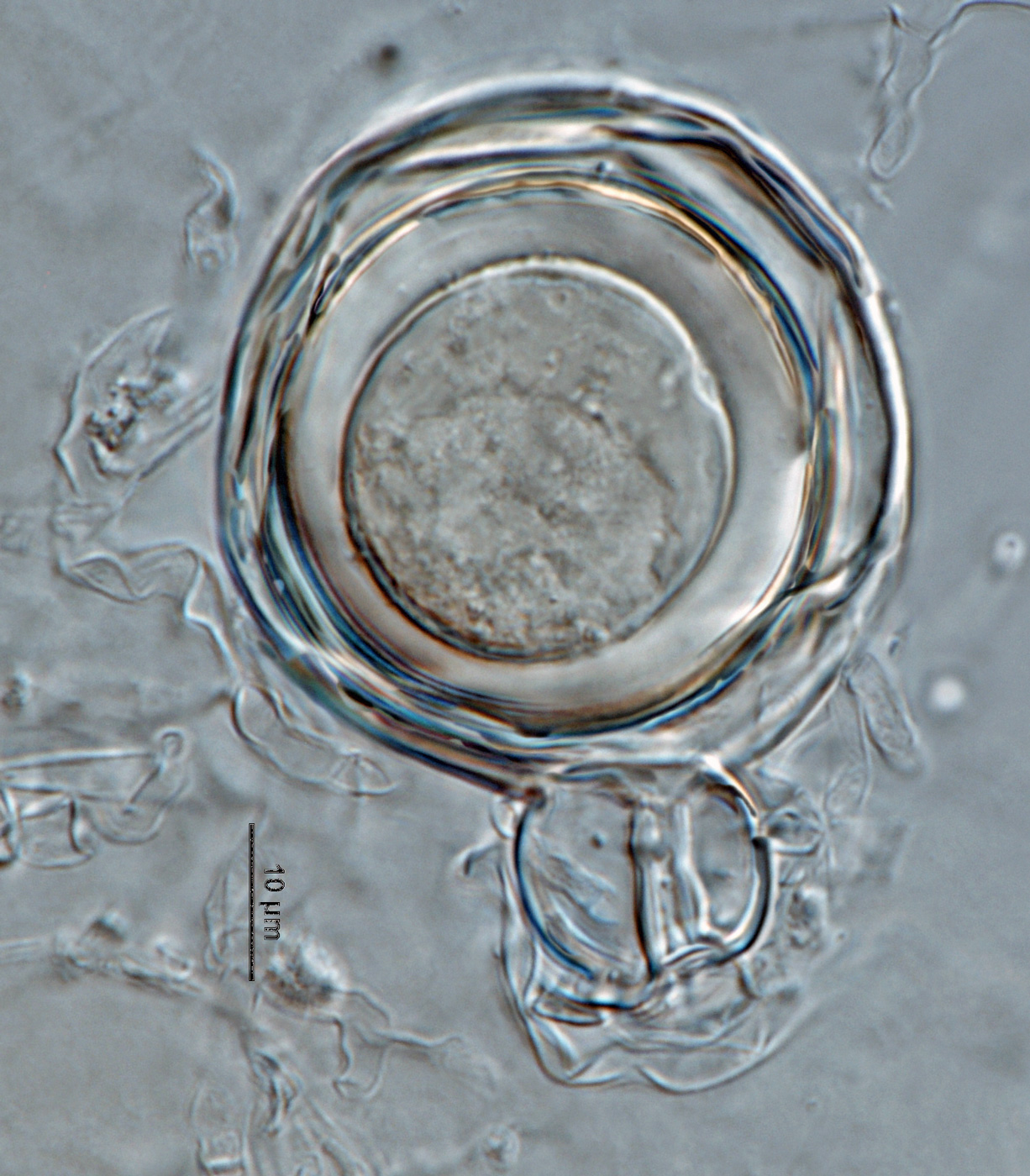Phytophthora amaranthi
|
Phytophthora spp. in subclade 2b: portion of the seven-loci ML phylogeny featuring the type cultures of 212 described species (by T. Bourret). Notice the position of P. amaranthi Ex-type CH30042 = S&T BL 174. Gloria Abad, USDA S&T.
|
|
Phytophthora spp. in subclade 2b: Morphological Tabular key (PDF) and Tabular key legends (PDF) in IDphy2 KEY SECTION. Notice the data of P. amaranthi Ex-type CH30042 = S&T BL 174. Gloria Abad, USDA S&T.
|
|
Phytophthora amaranthi (CPHST BL 174) colonies of the ex-type grown for 7 days on (a) V8® Agar, (b) potato dextrose agar, and (c) malt extract agar; photo by Krysta Jennings and Leandra Knight, USDA-APHIS-PPQ |
|
Phytophthora amaranthi (ex-type CPHST BL 174) asexual phase: (a-c) papillate and semipapillate sporangia; photos by Gloria Abad, USDA-APHIS-PPQ. |
|
Phytophthora amaranthi (ex-type CPHST BL 174) homothallic sexual phase: (a-e) smooth-walled oogonia with amphigynous antheridia and aplerotic oospores; photos by Gloria Abad, USDA-APHIS-PPQ. |
|
Phytophthora amaranthi (ex-type CPHST BL 174) asexual phase: papillate and semipapillate sporangia; photos by Gloria Abad, USDA-APHIS-PPQ. |
|
Phytophthora amaranthi (ex-type CPHST BL 174) asexual phase: papillate and semipapillate sporangium; photos by Gloria Abad, USDA-APHIS-PPQ. |
|
Phytophthora amaranthi (ex-type CPHST BL 174) asexual phase: papillate and semipapillate sporangium; photos by Gloria Abad, USDA-APHIS-PPQ. |
|
Phytophthora amaranthi (ex-type CPHST BL 174) homothallic sexual phase: smooth-walled oogonium with amphigynous antheridium and aplerotic oospore; photo by Gloria Abad, USDA-APHIS-PPQ. |
|
Phytophthora amaranthi (ex-type CPHST BL 174) homothallic sexual phase: smooth-walled oogonium with amphigynous antheridium and aplerotic oospore; photo by Gloria Abad, USDA-APHIS-PPQ. |
|
Phytophthora amaranthi (ex-type CPHST BL 174) homothallic sexual phase: smooth-walled oogonium with amphigynous antheridium and aplerotic oospore; photo by Gloria Abad, USDA-APHIS-PPQ. |
|
Phytophthora amaranthi (ex-type CPHST BL 174) homothallic sexual phase: smooth-walled oogonium with amphigynous antheridium and aplerotic oospore; photo by Gloria Abad, USDA-APHIS-PPQ. |
|
Phytophthora amaranthi (ex-type CPHST BL 174) homothallic sexual phase: smooth-walled oogonium with amphigynous antheridium and aplerotic oospore; photo by Gloria Abad, USDA-APHIS-PPQ. |
Name and publication
Phytophthora amaranthi J.P. Ann & W.H. Ko (2016)
Ann P, Huang J, Tsai J, Ko W. 2016. Morphological, molecular, and pathological characterization of Phytophthora amaranthi sp. nov. from amaranth in Taiwan. J. Phytopathol. 164: 94–101.
Corresponding author: kowh@nchu.edu.tw
Nomenclature
from Ann et al. (2016)
Mycobank
Etymology
refers to the genus name of the host
Typification
Type: TAIWAN. Collected from Amaranthus tricolor in Yunlin F0027621 (dried culture), deposited at the Fungal Collection, National Museum of Natural Science, Taichung, Taiwan.
Ex-type: Culture CH30042 (from isolate TARI28041) deposited at the Culture Collection and Research Center, Food Industry Research and Development Institute, Hsinchu, Taiwan.
Sequences for ex-type in original manuscript: ITS GU111585
Ex-type in other collections
(ET) CH30042, TARI28041, WPC P20892, S&T BL 174 (Abad)
Molecular identification
Voucher sequences for barcoding genes (ITS rDNA and COI) of the ex-type (see Molecular protocols page)
Phytophthora amaranthi isolate CPHST BL 174 (=TARI 28041) ITS rDNA MG783373, COI MH477739
Voucher sequences for Molecular Toolbox with seven genes (ITS, β-tub, COI, EF1α, HSP90, L10, and YPT1
(see Molecular protocols page) (In Progress)
Voucher sequences for Metabarcoding High-throughput Sequencing (HTS) Technologies [Molecular Operational Taxonomic Unit (MOTU)]
(see Molecular protocols page) (In Progress)
Sequences of selected specimens
Phytophthora amaranthi isolate CPHST BL 175 (=TARI 27147) = ITS rDNA MG783374, COI MH136993
Phytophthora amaranthi isolate CPHST BL 176 (=TARI 29352) = ITS rDNA MG783375, COI MH136994
Sequences with multiple genes for ex-type in other sources
- NCBI: Phytophthora amaranthi CPHST BL 174
- NCBI: Phytophthora sp. TARI 28041
- BOLDSYSTEMS: Phytophthora amaranthi (barcoding COI & ITS)
Position in multigenic phylogeny with 7 genes (ITS, β-tub, COI, EF1α, HSP90, L10, and YPT1)
Clade 2b
Morphological identification
adapted from Ann et al. (2016)
Colonies and cardinal temperatures
Colony colony:
assemblage of hyphae which usually develops form a single source and grows in a coordinated way
morphology after 5 days on V8-A, PDA, and MEA uniform. Minimum growth temperature 8°C, maximum 32°C, and optimum 24°C.
Asexual phase
SporangiaSporangia:
sac within which zoospores form, especially when water is cooled to about 10°C below ambient temperature; in solid substrates, sporangia usually germinate by germ tubes
semipapillatesemipapillate:
pertaining to the production of shallow having papilla that are not well developed, shallow and less nipple-like than fully papillate structures
, occasionally bipapillate (1.5%); persistentpersistent:
pertaining to sporangia that remain attached to the sporangiophore and do not separate or detach easily (cf. caducous)
or caducouscaducous:
pertaining to sporangia that become dislodged readily (i.e. deciduous) and separate from the sporangiophore (cf. persistent)
(20–30%), with short to medium pedicelpedicel:
the hyphal base of a sporangium that remains attached after the sporangium separates, or is shed, from the sporangiophore; the pedicel may be short (< 5 µm), medium (5–20 µm), or long (> 20 µm)
(up to 12 μl length); spherical, ovoidovoid:
egg-shaped, with the widest part at the base of the sporangium and the narrow part at the apex
to obpyriformobpyriform:
inversely pear-shaped, i.e. with the widest part at the point of attachment (cf. pyriform)
, 40–70 (av. 52.2 μm long) x 30–50 (av. 38.2 μm wide); originated on simple sympodiumsimple sympodium:
an unbranched sympodium with a single sporangium produced externally from the base of the previous sporangium
or branched sporangiophores. Hyphal swellings absent. ChlamydosporesChlamydospores:
an asexual spore with a thickened inner wall that is delimited from the mycelium by a septum; may be terminal or intercalary, and survives for long periods in soil
absent.
Sexual phase
Homothallichomothallic:
pertaining to sexual reproduction that can take place within a single thallus (i.e. self-fertile, non-outcrossing) (cf. heterothallic).
. OogoniaOogonia:
the female gametangium in which the oospore forms after fertilization by the antheridium
terminal, smooth-walled, spherical, globoseglobose:
having a rounded form resembling that of a sphere
to subglobose, 26–38 (av. 32.8 μm diam.); antheridiaantheridia:
the male gametangium; a multinucleate, swollen hyphal tip affixed firmly to the wall of the female gametangium (the oogonium)
amphigynousamphigynous:
pertaining to the sexual stage in which the antheridium completely surrounds the stalk of the oogonium (cf. paragynous)
; oosporesoospores:
zygote or thick-walled spore that forms within the oogonium after fertilization by the antheridium; may be long-lived
apleroticaplerotic:
pertaining to a mature oospore that does not fill the oogonium; i.e. there is room left between the oospore wall and oogonium wall (cf. plerotic)
20–28.8 (av. 32 μm diam.).
NOTE: Figures in original publication show only semi-papillate sporangiasporangia:
sac within which zoospores form, especially when water is cooled to about 10°C below ambient temperature; in solid substrates, sporangia usually germinate by germ tubes
. Description refers to papillatepapillate:
pertaining to the production of a distinct papilla at the distal end of the sporangium (cf. nonpapillate and semipapillate)
sporangia.
Additional specimen(s) evaluated
Phytophthora amaranthi CPHST-BL #174 (Abad) duplicate of the ex-type CH30042 (from isolate TARI28041) donated by Dr. J. Huang
Hosts and distribution
Distribution: Asia (Taiwan)
Substrate: leaves, roots, and stems of innoculated plants
Disease note: leaf blight, basal stem rot, and root rot
Hosts: Amaranthus tricolor, A. viridis (Amaranthaceae)
Retrieved January 18, 2018 from U.S. National Fungus Collections Nomenclature Database.
Quarantine status
Phytophthora amaranthi is listed in the U.S. Regulated Plant Pest Table (last modified Nov. 15, 2017).
Additional references and links
- SMML USDA-ARS: Phytophthora amaranthi
- EPPO Global Database: Phytophthora amaranthi
- Forest Phytophthoras of the World: Phytophthora amaranthi
- CABI Digital Library: Phytophthora amaranthi
- Encyclopedia of Life (EOL): Phytophthora amaranthi
- Index Fungorum (IF): Phytophthora amaranthi
- Google All Phytophthora amaranthi
- Google Images Phytophthora amaranthi
- Google Scholar Phytophthora amaranthi
Fact sheet author
Z. Gloria Abad, Ph.D., USDA-APHIS-PPQ-S&T Plant Pathogen Confirmatory Diagnostics Laboratory (PPCDL), United States of America.


